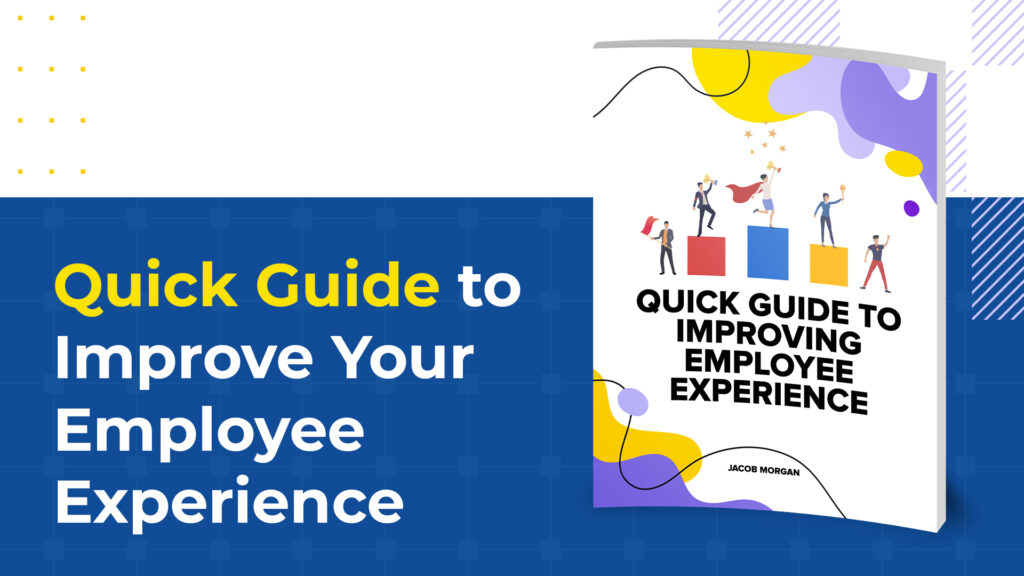The importance of employee experience has never been higher. I wrote my book, The Employee Experience Advantage half a decade ago and the material in that book is more relevant and accurate today than it was then. As we progress into 2023, there are a number of trends that are shaping how organizations approach this critical area of business. Here are the top five employee experience trends of 2023, along with actionable steps that organizations can take to capitalize on them.
Embracing a Hybrid Workforce
The pandemic has forever changed the way we work, and organizations are now embracing hybrid workforces that allow employees to work from anywhere. This trend is here to stay, and organizations that fail to embrace it risk falling behind. However, hybrid work is not the same thing as virtual work. I’m still a believer in in-person work. Hybrid work just means having more flexibility.
Actionable steps include:
- Define a clear hybrid work policy that outlines expectations for employees.
- Invest in the right technology to support a hybrid workforce.
- Create a culture of trust and collaboration that supports remote work.
Fostering Employee Wellbeing
I look at employee wellbeing as simply viewing your employees as human beings, not just as workers. This means understanding and focusing on the person not just on the task the person performs. Organizations play a vital role in the lives of employees and they act as gyms, cafeterias, social circles, financial advisors, coaches, and integral aspects of life. Work is no longer just a place you show up to get a paycheck. Employee wellbeing has always been important, but in 2023 it will take on even greater significance as organizations look to support their employees in an increasingly stressful world.
Actionable steps include:
- Define what well-being means to your organization.
- Provide access to various programs that align with your definition of well-being.
- Create a culture where employees are seen as human beings and not just as workers.
Leading with vulnerability
This is the subject and the title of my next book which is coming out later this year. Being vulnerable and leading with vulnerability are not the same thing. Leading with vulnerability means taking actions to create positive outcomes that relate to being vulnerable. For example, instead of just admitting you can’t do something you also commit to taking action to learn what it is you can’t do. It blends sharing a weakness, challenge, or struggle with taking next steps to improve. Leading with vulnerability is all about growth, development, and improvement.
Actionable steps include:
- When being vulnerable think of actions you can take to follow.
- Practice self-awareness and reflect on your own emotions.
- Balance competence with connection.
Developing purpose and meaning
There is an absolutely massive void when it comes to our collective sense of feeling connected to each other and the work that we do. Most people struggle to understand why they do what they do and how the work they do is creating any kind of impact.
Actionable steps include:
- Connect the work you do with a bigger purpose.
- Tell stories, meet customers, talk with employees to see how your work is making an impact.
- Show up to work each day with a mindset of curiosity.
Embracing skills are greater than jobs
For decades we have been obsessed with climbing the corporate ladder and focusing on a single career path. This meant that if you were in marketing you climbed that corporate marketing ladder. But in today’s world the skills you have are more important than the job you occupy. The skills you possess are crucial because they are transferable and can be applied to different roles and industries throughout your career. While your job may be specific to a certain industry or company, the skills you have can be utilized in a variety of contexts. For example, if you have strong communication and problem-solving skills, you can excel in customer service, management, or even entrepreneurship. Your skills enable you to adapt to changing circumstances and tackle new challenges, which is essential in today’s rapidly evolving job market.
Actionable steps include:
- Understanding what your skills are.
- Having a vision and a plan for where you want to go professionally.
- Get feedback from those around you.
- Be a perpetual learner.
These are the top five employee experience trends that organizations need to pay attention to in 2023. There is a lot of opportunity for organizations around the world to create places where employees actually WANT, not NEED, to show up to work.
. . .
Companies with better employee experiences have more engaged and productive workers, higher profits, and the ability to attract and retain talent. In today’s competitive talent landscape, companies can’t afford not to invest in employee experience. Download your copy and start creating better experiences for your employees and customers today!

Comments